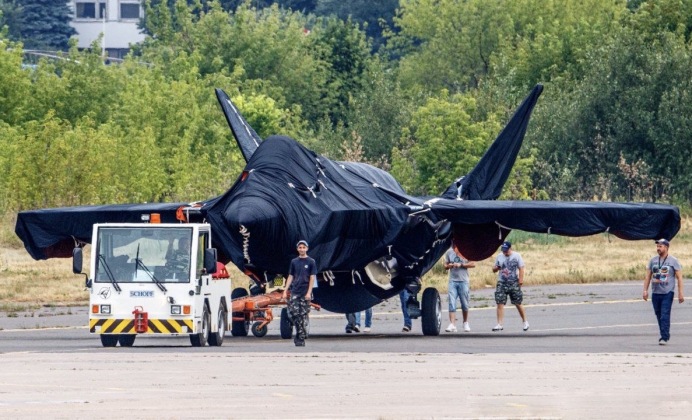Following the unveiling of the Checkmate stealth fighter in July, many aspects of the export-oriented weapons program have been speculated ranging from which engine will power the aircraft to which parties could be the first clients. Although it has been marketed as a lightweight aircraft with low operational costs, serving as a cheaper and lighter counterpart to the Su-57 much as the MiG-29 did to the heavyweight Su-27 in the preceding fourth generation of fighters, information released in the second week of November indicate that the aircraft is considerably bigger than many early estimates indicated. An scale digital representation of the fighter next to the Su-57 showed it to have a length and wingspan only around 13% smaller than the Su-57, indicating that it would likely be a medium weight rather than a lightweight platform. The two aircraft otherwise share a great deal which has been key to keeping the Checkmate’s research and development costs low, as it will use essentially the same technologies as the Su-57 including the same armaments and likely a scaled down version of the same AESA radar.

Since its unveiling the possibility that the Checkmate will also use the Su-57’s Saturn 30 engine has also been speculated. The engine is set to enter service from 2022 and will reportedly surpass the power of any fighter engine currently in use worldwide. The Su-57 fighter will use the engine in a twin configuration and the Checkmate in single configuration. Using the same engine would reduce logistical and operational difficulties, and is common for complimentary heavy and light fighters such as the American F-15 and F-16 or the Chinese J-11/16 and J-10 or J-8 and J-7. The possibility was also previously raised however that the Checkmate would use an engine based on the older AL-41 which powers the twin engine Su-35, which is already widely deployed by the Russian Air Force and could reduce the new fighter’s costs considerably.
New information regarding the size of the Checkmate indicate that it is more likely to use the Saturn 30, as while the AL-41 would be sufficient for a genuinely lightweight aircraft the relatively large new fighter will need a more powerful engine to be able to achieve the flight performance advertised. The possibility also remains that the Checkmate could use a different engine, possibly even a derivative of the Saturn 30 with greater power. This was seen in the American 5th generation fighter program where the single engine F-35’s F135 engine was loosely based on the heavier F-22’s F119 but was very considerably more powerful. It is also possible that different variants of the Checkmate will use different engines, particularly as the fighter is aimed at export markets and as such could be customised to client’s needs and budgets.
